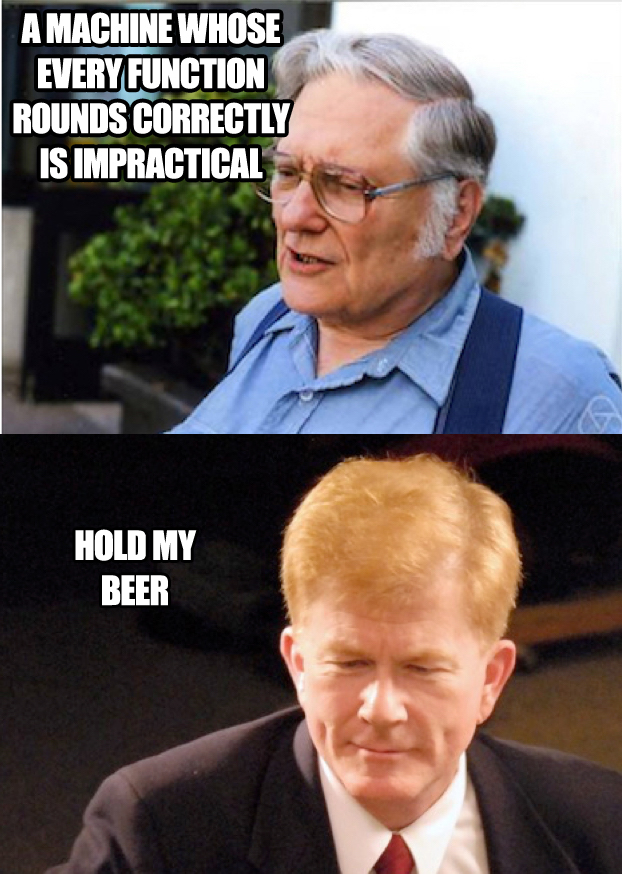Fun Stuff
Well, okay... Maybe not "FUN", but this stuff sure doesn't fit anywhere else.

Twelve Ways to Fool the Masses HTML
HPCWire interview, January 13, 2005 HTML
Posters and logos designed by Dr. Gustafson:
The HCCA4 poster for the Fourth Conference on Hypercubes, Concurrent Computers and Applications held in Monterey, CA in 1989. The figure shows an 8-dimensional hypercube architecture, laid out on a plane with circular arcs for the communication between the processors (magenta squares). The conference was held at the height of the fascination with hypercube computers, and had over 600 attendees.
The DMCC5 logo for the Fifth Distributed Memory Computing Conference. The DMCC conference was really the fifth hypercube conference, but people were starting to realize that hypercubes were evolving into more general distributed-memory computer systems. So the graphic for this conference was based on a five- dimensional hypercube projected onto the plane. A single (three-dimensional) cube is highlighted in blue, as is a five-pointed star that happens to occur in the pattern.
The DMCC6 poster for the Sixth Distributed Memory Computing Conference. Continuing the hypercube theme for the posters, the graphic for the sixth conference was a tesseract (four-dimensional cube) projected into three dimensions isometrically, hovering over Mount Hood and the city of Portland, Oregon where the conference was held. This was done with an early version of Adobe Illustrator, completely without computer help for shading or perspective. That is, every line was colored and positioned by hand instead of by calculation.
The CCS logo. Gustafson was one of the authors of the proposal that got $25M in funding that launched the Center for Computational Science consortium. This consortium included Oak Ridge National Laboratory, Ames Laboratory, and others, and had a focus on computing for materials science and environmental remediation. Gustafson came up with this logo for the program, but it never made it past his then-manager, James Corones. Too much gray scale? Who knows.
The Pentium Pro Cluster Workshop logo. John Gustafson and Nan Ripley organized the first workshop for Linux clusters, held in April 1997 in Des Moines. They invited the 60 people actively designing clusters, turning away hundreds of people who had heard of the workshop and were intensely interested in learning more about how to build their own low-cost supercomputer out of commodity PCs and public domain software. The logo is based on a pseudocrystal. True tesselations with five-way symmetry are impossible, but one can still tile the plane with shapes like those in the logo. It represents the freeform communication possible with modern commodity technology, but mainly it just formed a fun pattern.
The Scalable Computing Laboratory logo
The CHAMMP logo
And a bumper sticker